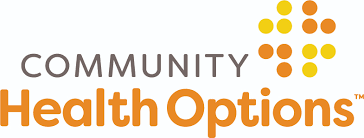It may be hard to know when someone has crossed the line from casual drinking to alcohol addiction. Many people battling substance use disorders hide their addictions well, so it can be hard to determine whether their use has become abuse. Seeing a friend or loved one have a few drinks when you’re out may not seem like a big deal, and most will write it off as someone just “having fun.” However, there are signs to look out for that will give you a clue that someone’s casual alcohol use has turned into something dangerous. The Crossroads team is well-versed in alcohol addiction treatment for women, and we can walk you through all of the options.
Signs That Casual Alcohol Use Has Turned into an Alcohol Problem
In some cases, people drink alcohol to cope with stress. Unfortunately, this often leads to overindulging and becoming dependent on alcohol. You may think that signs of alcohol addiction are easy to pick up on, but that’s not always the case. While you may see someone only have a couple of drinks in public, they may be engaging in excessive and unhealthy drinking behind closed doors. Sometimes the signs are subtle, and you may not even notice. For instance, a peer may have one more drink each time you are out with them, and this slow escalation may not be as noticeable. However, it can quickly get out of control at that pace.
If you think someone you care about may have a drinking problem that needs to be addressed, here are some of the most common signs to look for.
Changes in Appearance
If someone is noticeably not taking care of their personal appearance, it’s a cause for concern. Basic hygiene and grooming can seem insignificant to someone whose sole focus is going after the next drink. Look for signs of dehydration or sleeplessness like tired skin and red eyes.
Odor
You’ll be able to smell it right away if they still have alcohol on their breath, skin, or hair from the night before. It may even be from a drink they had when they woke up, which is even worse.
Balance
Those dependent on alcohol lose some of their ability to stay balanced and coordinated due to alcohol’s effect on the brain. This puts them at risk of falling and seriously injuring themselves.
Weight
Appetite is one of the first things affected by alcohol misuse. This can be noticeable in s serious weight gain due to craving fast food or a serious weight loss if they have lost the desire to eat.
Red Face
If you notice red patches on someone’s nose or cheeks, this could be a sign that their blood vessels are enlarged. This symptom occurs when large amounts of alcohol are consumed.
Skin Color
Alcohol’s effect on the liver can cause jaundice, which manifests itself as yellow skin discoloration.
Bruises
Bruising can happen very easily when platelet counts are low as a result of excessive consumption of alcohol. The increased inability to clot puts them at risk for a stroke.
Alcohol Addiction Treatment for Women
While being able to recognize tell-tale signs of alcohol addiction is important, the next step is doing something about it. Crossroads offers alcohol addiction treatment in Maine that is gender-responsive. It’s an individualized treatment plan that can be designed specifically to meet the needs of women, including:
- Counseling
- Wellness services
- Holistic care
- Aftercare support.
This healing approach has been proven to help women overcome and manage the issues that contribute to their alcohol addiction.
Consider Crossroads for Alcohol Addiction Treatment
Addiction takes over a person’s life to the point where finding and drinking alcohol is all they want to do. If you are wondering if someone truly needs to seek help at an alcohol addiction treatment center, then the answer is most likely yes. Recognizing the physical signs of alcohol addiction can help you be better equipped to help someone else. The path from casual alcohol use to addiction is a well-traveled one, and you can help someone struggling by paying attention and supporting them as they seek the help they need. Give Crossroads a call at 877.978.1667 to learn more about how we work with women to develop the skills and strategies they need to avoid relapse and achieve their recovery goals.


















